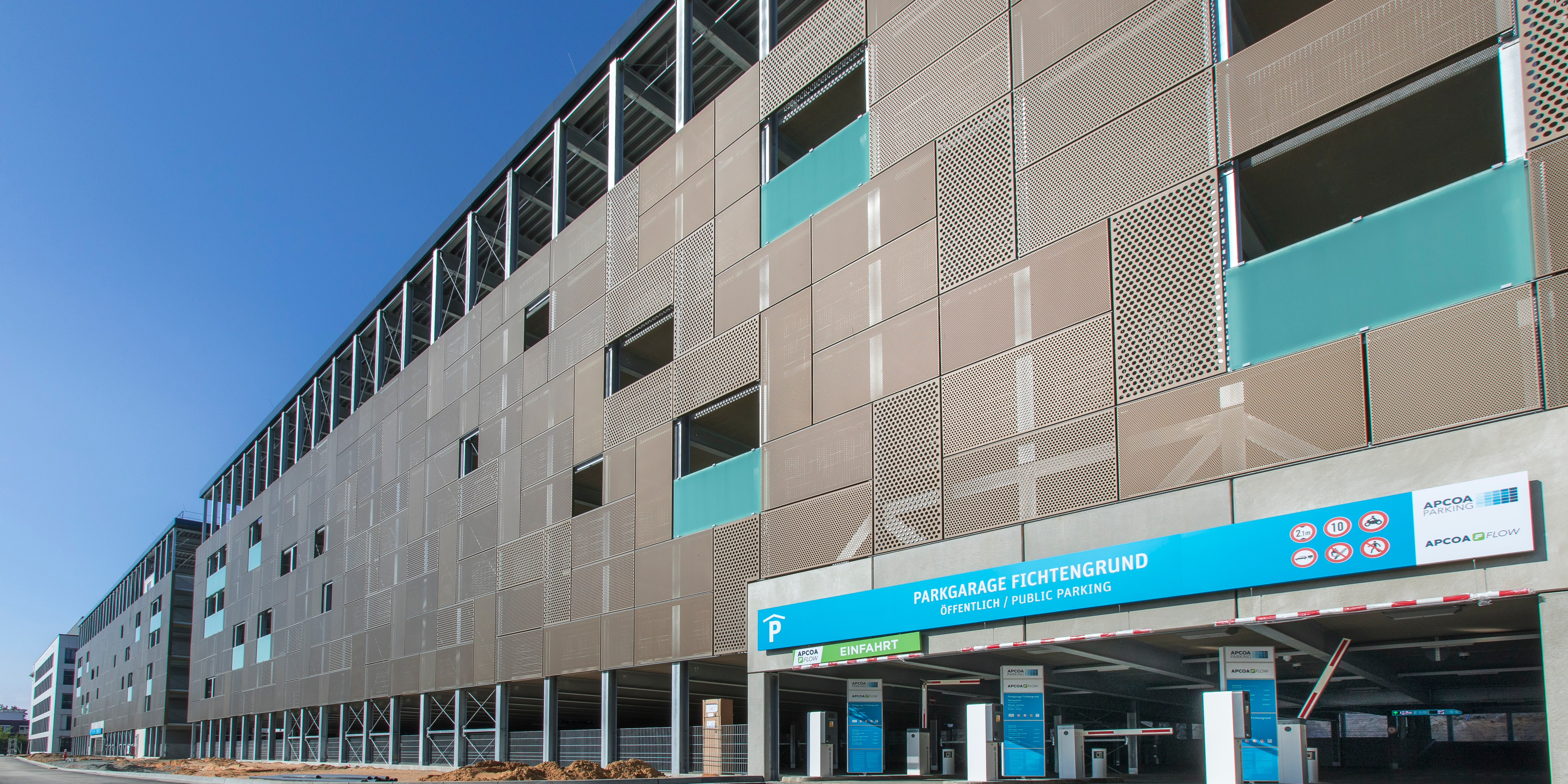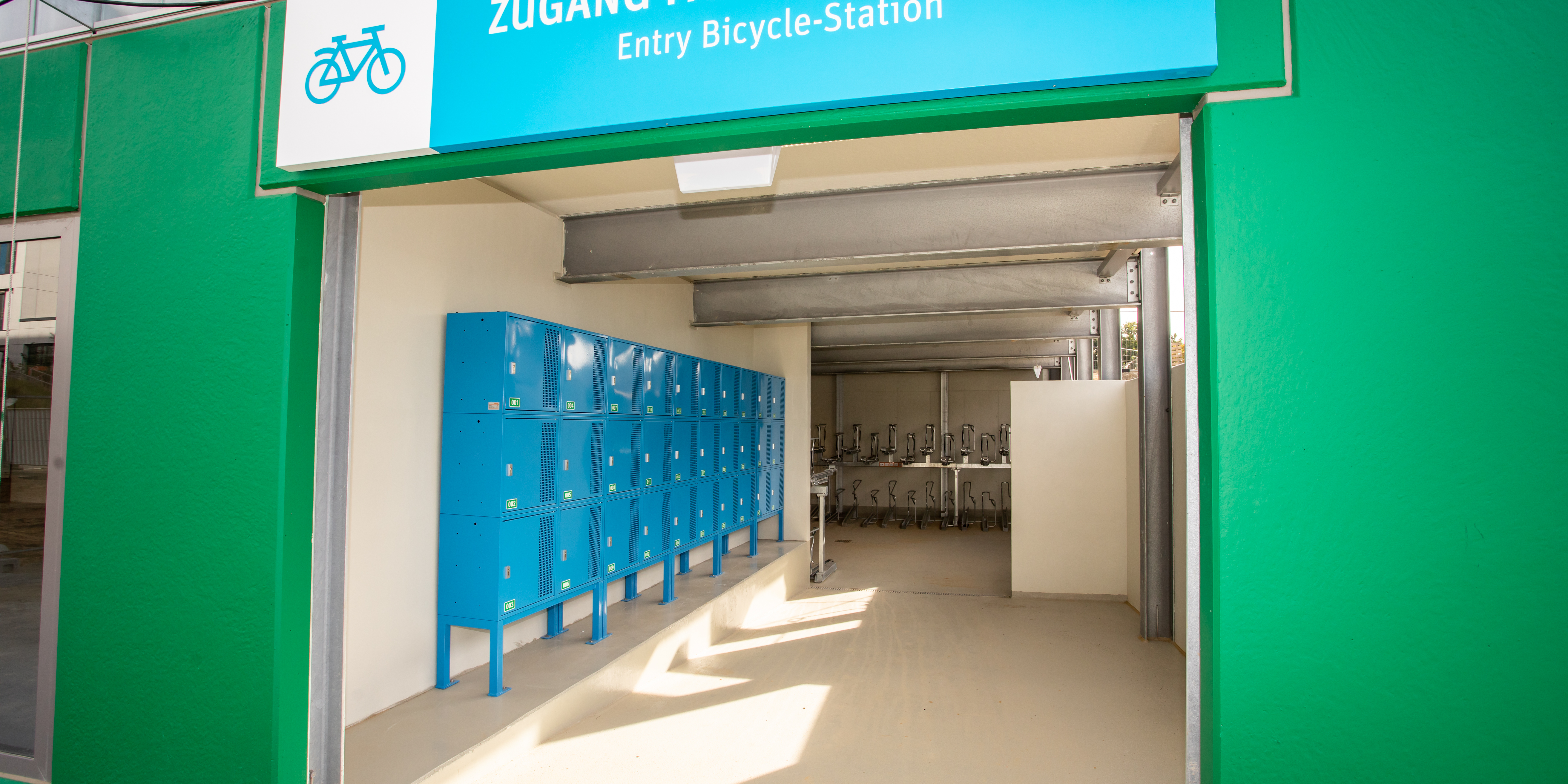Stuttgart, October 6, 2021 – In many German cities, politicians and urban developers are discussing a more ecological mobility in city centers. The new parking garage at the municipal hospital in Brunswick shows the way sustainable parking can be designed. The new building, with space for over 1,300 cars and 300 bicycles, opened on October 1st. The AIF Capital Group invested around 20 million in the property, which is part of its Parking Fund Europe. It is managed by Europe’s largest parking operator APOCA, provided with a 15-year lease. “With Goldbeck as the construction company and APOCA as the parking operator, we were able to further expand our long-standing partnerships through this project,” said Thomas Häbich, asset manager at AIF Capital Group. “We look forward to deepening this trusting cooperation and thus creating further joint synergies.”
The new parking garage, as of now Brunswick’s largest parking facility, is characterized by its comprehensive ecological concept, ranging from the construction materials to the usage options: 30 charging columns for electric cars have been integrated from the very beginning. Up to 100 charging columns can be added at short notice, depending on demand. For e-bikes, the parking garage holds 100 charging stations. “Parking garages like the one in Brunswick show that, contrary to all preconceptions, they can be an aesthetic asset to urban architecture,” explains Dr. Sven Eggers, CEO of AIF Partner KVG. “In addition, such sustainable parking space supports the traffic turnaround.” The system construction consists almost exclusively of recyclable materials. Approximately 90 percent of the building materials can be recycled and easily deconstructed. An LED lighting concept and large transparent elements made of recycled glass support energy-efficient operation.
A major feature is located on the 6,000-square-meter roof of the parking garage: an automatically irrigated wild bee habitat with mounds and dead wood. It was created in coordination with the Julius Kühn Institute, the Federal Research Institute for Cultivated Plants in Germany. Other green spaces on the facades give insects additional habitat.









